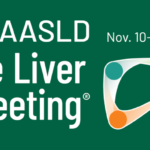Editor’s Note:
The gut microbiome, a complex ecosystem within the human intestinal tract, has a broad impact on physiological functions. Gut microbiome imbalance has become one of the most critical environmental factors in the onset of chronic inflammatory diseases. The liver is one of the first identified targets of autoimmune attack. In recent years, with deeper research into the gut microbiome, the relationship between gut microbiota and liver diseases has gained increasing attention. Studies have found that gut microbiota might play a role in the development and progression of autoimmune liver diseases, making the treatment of gut microbiota imbalance a potential key target.
At the recently concluded premier international event in hepatology – the AASLD 2023, Professor Bernd Schnabl from the University of California, San Diego, presented a topic titled “The Role of the Microbiome in Autoimmune Liver Disease”, delving into the relationship between the gut microecology and autoimmune liver diseases. “Hepatology Digest” magazine had the opportunity to engage Professor Bernd Schnabl in an in-depth discussion on this topic. The interview video and the transcript in both English and Chinese are compiled below.
1. Exploring the Correlation Between Gut Microecology and Autoimmune Liver Diseases
Hepatology Digest : What role does gut microbiomics play in the progression of autoimmune liver diseases? What is the current understanding of the relationship between microbiomics and autoimmune liver diseases?
- Professor Bernd Schnabl: In general, there is indeed a change in the gut microbiota of patients with autoimmune liver diseases, often characterized by an increase in harmful bacteria and a decrease in beneficial ones. For instance, in patients with primary sclerosing cholangitis, there’s an increase in bacteria like Klebsiella and Veillonella, potentially exacerbating the disease. Additionally, these patients typically show reduced diversity in gut microbiota, a common situation in many chronic diseases. Particularly, some autoimmune liver disease patients have increased gut permeability, allowing bacteria and their toxins to directly enter the liver via the portal vein.
- Under normal circumstances, microbial products like lipopolysaccharides and endotoxins cannot migrate from the gut to the liver, a unique feature of the gut-liver relationship. The liver is the first organ to encounter these microbial and metabolic products, which causes an increase in liver inflammation. Persistent liver inflammation can worsen the patient’s condition. Furthermore, certain “beneficial functions” of the gut microbiota in autoimmune liver disease patients are also diminished. For example, recent studies found a reduction in Vitamin B6 levels in the serum of patients with primary sclerosing cholangitis, which is synthesized by gut microbiota and bacteria.
2. Gut Microbiome Research Aiding in Clinical Patient Stratification and Personalized Treatment
Hepatology Digest : How does research in gut microbiomics offer new concepts and methods for the diagnosis, prevention, and treatment of autoimmune liver diseases?
- Professor Bernd Schnabl: In terms of diagnosis, I believe research in gut microbiomics is very significant, aiding clinicians in better diagnosing patients. Based on test results, we can identify which patients are likely to progress and which are not, allowing us to stratify patients and set treatment goals accordingly. Ideally, in the future, we could use sequencing to identify microbiomic biomarkers (without the need for culturing) to distinguish which patients may respond to certain therapies and which might require more potent treatment.
- For instance, gut microbiomics can identify patients whose diseases are related to increased gut permeability. These patients might try treatments targeting this issue. This approach could lead to more effective drug development and reduce the risk of unnecessary treatments and adverse events for patients. Overall, I believe this is the direction of future research, where microbiomic biomarkers can aid in patient stratification and personalized treatments.
3. Exploring the Progress and Prospects of Gut Microbiome-Centered Therapies
Hepatology Digest: From your perspective, what do you see as the direction and prospects of microbiome research in autoimmune liver diseases and gut health?
- Professor Bernd Schnabl: That’s an excellent question. Current therapies centered around modulating the gut microbiome mainly fall into two categories: targeted and non-targeted.
- Starting with non-targeted therapies, there are several ongoing or completed clinical trials. For example, using antibiotics to simply clear the gut microbiota, though this doesn’t differentiate between good and bad bacteria; or supplementing probiotics, which are beneficial and can restore gut health. Additionally, fecal microbiota transplantation involves transferring functional gut microbiota from healthy individuals into patients to rebalance the gut microbiota, potentially treating intestinal and extraintestinal diseases. While promising results have been seen in the field of gut microbiome research, no method is yet ready for clinical practice and needs further clinical research and larger-scale data to ensure efficacy and safety in liver disease patients.
- Regarding targeted therapies, there are fewer related clinical trials. A recent study showed the potential of treating specific gut microbiome metabolic changes, such as using bacteriophages. Bacteriophages, as their name suggests, are small viruses that specifically infect certain bacteria, replicating within and killing the target bacteria. The beauty of bacteriophage therapy is its ability to replicate inside bacteria, kill bacteria from within, causing bacterial lysis and releasing more phages to target other bacteria. This ultimately reduces the number of harmful bacteria, hindering disease progression. This therapy is still being explored in animal models, but the current results are encouraging.




